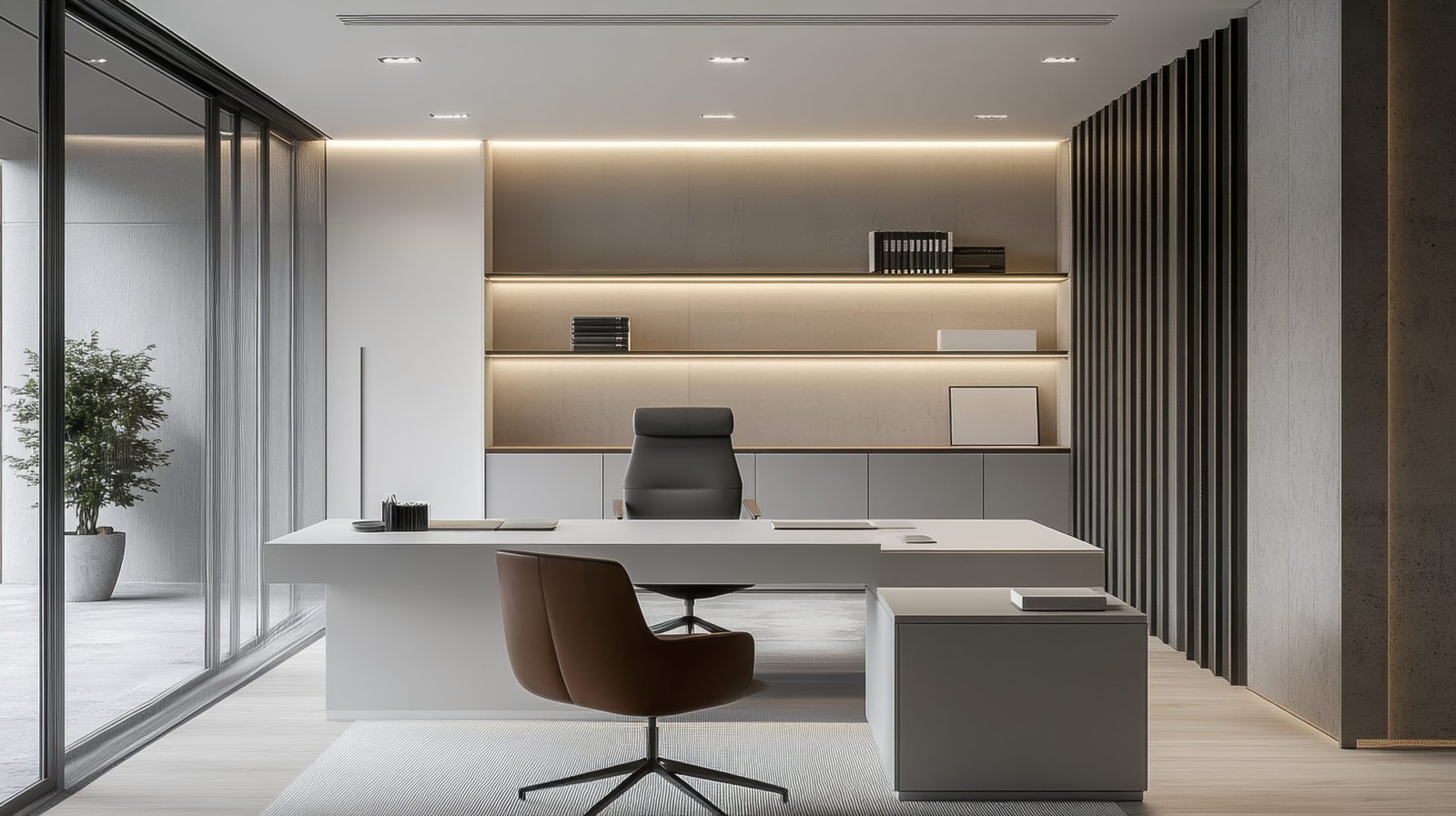The business landscape in Dubai is still developing at a very fast pace, and businesses have come to realize that effective workspace designs have a huge influence on client impression and business performance. The contemporary interior design in corporations has discontinued the traditional office design layouts to adapt new innovative ideas that leave lasting impressions on visitors, besides heightening the productivity of the employees.
Adopting Biophilic Design Features
The elements of nature have also taken centre stage in modern interior design approach in companies, with companies integrating living walls, indoor gardens, and natural materials within their premises.
The urbanity of the setting of Dubai makes the biophilic design especially attractive because it allows nature to be introduced in interior settings to produce soothing environments that amaze clients and contribute to employee well-being.
Wood details, stone elements, and lots of vegetation are changing the cold office spaces into comfortable areas that resemble more a luxury hospitality establishment than a classical corporate workplace.
The integration of natural lighting opportunities provided by the strategic placement of windows and glass partitions ensures the maximum relation to outdoor space and preserves the professional utility.
Providing Adaptable Multi-Purpose Areas
The important aspect of modern corporate interior design is flexibility, which is achieved by a variety of layouts supporting different business activities at different times of the day.
Modular furniture systems enable spaces to be reconfigured as presentation spaces, collaborative work areas, or networking spaces, as the immediate requirement dictates.
Demountable walls and transformable meeting rooms allow the companies to change their setup depending on the size of the client group and the character of a meeting.
Flexibility is an especially appreciated aspect of Dubai business since it regularly welcomes a wide range of international customers with differing cultural tastes and space demands.
Introducing Elements of Luxury Hospitality
The client zones of the contemporary office are beginning to resemble the lobbies of luxury hotels and upmarket retail spaces more than they resemble conventional reception spaces.
The new trend in corporate interior design focuses on designing memorable experiences, which start as soon as the clients step into the building.
The use of high quality materials like marble countertops, brushed metal details, and bespoke millwork show a concern over quality that clients relate to high-quality service provision. Well-selected art pieces and sculptural details provide a visual appeal and demonstrate the company culture and elegance.
Leveraging Advanced Technology Integration
Technology seamlessly woven into corporate interior design impresses clients while streamlining business operations. Interactive displays, smart glass that transitions from transparent to opaque, and wireless charging surfaces integrated into furniture demonstrate innovation and forward-thinking approaches.
Digital wayfinding systems help clients navigate complex office layouts while providing opportunities to showcase company achievements, projects, and values through dynamic content displays.
Voice-activated controls for lighting, temperature, and audiovisual systems create sophisticated environments that feel effortless to operate.
Establishing Strong Brand Identity Through Design
Visual branding extends far beyond logos and color schemes in contemporary corporate interior design, with companies creating cohesive experiences that reinforce their market positioning throughout their physical spaces.
Custom design elements, branded architectural features, and strategically placed company messaging create environments that feel distinctly aligned with business identities.
Material selections, furniture styles, and spatial layouts communicate company values without requiring explicit explanation.
Conservative financial services firms might choose classic materials and traditional layouts, while creative agencies could embrace bold colors and unconventional spatial arrangements.
Creative Shelf LLC: Redefining Interior Design Excellence in Dubai
Since its inception in 2007, Creative Shelf LLC, co-founded by Mr. Huzefa Altaf, has been a cornerstone of Dubai’s interior design and fit-out industry. Renowned for crafting smart, functional, and visually stunning spaces, Creative Shelf delivers bespoke solutions for residential, commercial, retail, hospitality, exhibition, and industrial projects. Under Mr. Huzefa Altaf’s visionary leadership, the company—part of the Creative Group of Companies, including Creative Furniture and Creative Interior Company—leverages an in-house execution model to ensure seamless project delivery, from innovative design to precision fit-out.
With nearly two decades of expertise, Creative Shelf transforms spaces, focusing on sustainability, user-centric design, and measurable ROI through strategic brand integration. Their diverse portfolio, from luxurious villas to dynamic office spaces, showcases their mastery in blending aesthetics with functionality, earning them a reputation as a trusted authority in the UAE.
Creative Shelf’s thought leadership is evident in their blog, which offers expert insights on design trends and practical solutions, empowering clients and enthusiasts alike. Committed to excellence, innovation, and quality, Creative Shelf LLC continues to set the standard for interior design and fit-out services in Dubai, creating spaces that inspire and endure.

